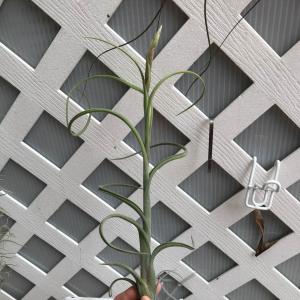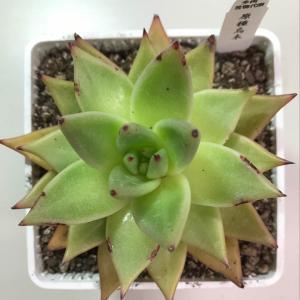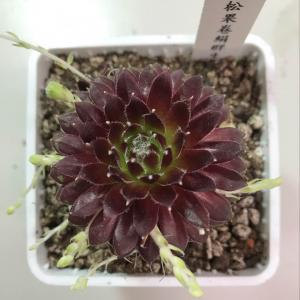文章
Miss Chen
2018年04月16日

A salad vegetable grown in almost every garden, leaf lettuce is also called loose-leaf lettuce. Some types of lettuce you may plant include romaine or cos with their upright, long heads, small, soft butterhead varieties, crisphead or iceberg lettuce, and asparagus or stem lettuce. Knowing how to trim your lettuces while still growing them in your garden or after harvesting will help your lettuce last longer and increase the quality, flavor and presentation of your produce.

Step 1
Use sharp garden scissors or shears to trim 2 to 4 inches from your lettuce leaves in the garden when they have grown 6 to 10 inches tall or cut your lettuce carefully to the crown, or the point where the lettuce root joins the stem at ground level.
Step 2
Fertilize and water your lettuce greens after trimming; your lettuce greens will regrow and be ready for trimming again after two to three weeks. "Cut-and-come-again" represents this process of growing continuous harvests of lettuce, meaning that you do not have to wait until harvest time to enjoy your produce.
Step 3
Cut off all brown leaf tissue, called "tipburn," from your lettuce. Tipburn is a disease where the tips and edges of the leaves decay from uneven watering during the high temperatures of summer. The rest of the lettuce will not be harmed when you remove the leaves with tipburn. Prevent tipburn by watering your lettuce lightly but frequently to keep the soil evenly moist.

Step 4
Trim soft lettuces after harvesting by removing damaged, discolored leaves. Soft lettuces include butter lettuce, Bibb and leaf lettuce.
Step 5
Tear lettuce leaves into bite-size pieces when preparing them for a meal ahead of time rather than cutting them with a metal knife; otherwise, the lettuce leaf edges will rapidly become brown. Ascorbic acid oxidase also releases when you cut or chop lettuce with a knife, destroying its vitamin C content.
Step 6
Trim the butt of crisphead lettuce, like iceberg lettuce, to within 1/8 to 1/4 inch of the bottom leaf when preparing lettuce for public exhibits, such as vegetable shows. Trim the heads of Bibb lettuce varieties and romaine lettuces by removing damaged, old leaves. Briefly soak the lettuces in water, spray them carefully with water, and then store the lettuces in a dry, cool area until ready for the vegetable show.

Step 1
Use sharp garden scissors or shears to trim 2 to 4 inches from your lettuce leaves in the garden when they have grown 6 to 10 inches tall or cut your lettuce carefully to the crown, or the point where the lettuce root joins the stem at ground level.
Step 2
Fertilize and water your lettuce greens after trimming; your lettuce greens will regrow and be ready for trimming again after two to three weeks. "Cut-and-come-again" represents this process of growing continuous harvests of lettuce, meaning that you do not have to wait until harvest time to enjoy your produce.
Step 3
Cut off all brown leaf tissue, called "tipburn," from your lettuce. Tipburn is a disease where the tips and edges of the leaves decay from uneven watering during the high temperatures of summer. The rest of the lettuce will not be harmed when you remove the leaves with tipburn. Prevent tipburn by watering your lettuce lightly but frequently to keep the soil evenly moist.

Step 4
Trim soft lettuces after harvesting by removing damaged, discolored leaves. Soft lettuces include butter lettuce, Bibb and leaf lettuce.
Step 5
Tear lettuce leaves into bite-size pieces when preparing them for a meal ahead of time rather than cutting them with a metal knife; otherwise, the lettuce leaf edges will rapidly become brown. Ascorbic acid oxidase also releases when you cut or chop lettuce with a knife, destroying its vitamin C content.
Step 6
Trim the butt of crisphead lettuce, like iceberg lettuce, to within 1/8 to 1/4 inch of the bottom leaf when preparing lettuce for public exhibits, such as vegetable shows. Trim the heads of Bibb lettuce varieties and romaine lettuces by removing damaged, old leaves. Briefly soak the lettuces in water, spray them carefully with water, and then store the lettuces in a dry, cool area until ready for the vegetable show.
0
0
文章
Miss Chen
2018年04月16日

Growing vegetables in your home garden requires a certain amount of attention to soil condition and pH level. The pH level of soil can critically affect the growth of vegetables, allowing (or preventing) roots to take up sufficient nutrition for the production of the flowers and fruit. If you live in a region with acidic soil, selecting vegetables that thrive in acidic soil will bring you a better harvest.

Potatoes
Potatoes (both Irish potatoes and sweet potatoes) prefer acidic soil conditions. The ideal pH range for this crop is 4.8 to 5.5, according to the Cornell University Vegetable Growing Guide. Potatoes need a light, loose, well-draining soil that is high in organic matter. To add nutrients and help aerate the soil, work in soil amendment such as peat moss, compost or manure at planting time. Avoid adding too much nitrogen-rich fertilizer, which will encourage the potato plants to grow foliage at the expense of tuber production.
Eggplant
Eggplants also grow well in slightly acidic soil (pH level between 5.5 and 7.5). The eggplant is a heat-loving plant that requires full sun and frost-free temperatures. The crop will benefit from the addition of compost or manure to increase the amount of organic matter in the soil. Mulching plants helps to keep down weeds and retain moisture.
Tomatoes
Tomatoes prefer a slightly acidic soil with a pH range of 6.2 to 6.8, according to the University of Rhode Island Landscape Horticulture Program. A loamy, well-draining soil that is rich in organic matter will help tomato plants grow and produce. Tomatoes also benefit from the application of fertilizer that contains phosphorus, but fertilizer with too much nitrogen can inhibit fruit production. A 5-10-10 or 5-20-20 fertilizer is recommended. These numbers designate the percentages of nitrogen, phosphorus and potassium in the fertilizer formula. Nitrogen is always the first number in the formula, phosphorus is the second and potassium is the third.

Green Peppers
Green peppers can be grown in slightly acidic soil in the range of 6.0 to 6.8. They require well-draining soil with moderate fertility for best results. Peppers are warm season vegetables that will experience blossom drop if exposed to night temperatures below 60 degrees Fahrenheit. They will also suffer from poor fruiting if the blossoms develop into the fruit (called "fruit setting") when temperatures are above 80 degrees Fahrenheit during the day, according to Ohio State horticulturist Marianne Riofrio.
Squash
Squash will grow in acidic soils with a pH range of 5.5 to 6.8, according to the University of Connecticut website. Add compost or manure at planting time to condition the soil and retain moisture. Mulching helps to control weeds that compete for nutrients with the squash plants. Do not mulch with grass clippings from lawns that have been treated with an herbicide.
Kale
Kale prefers soil in the pH range of 6.0 to 7.0 for best growth, according to the University of Rhode Island Landscape Horticulture Program. Kale is a cool weather crop that prefers daytime temperatures of 65 to 80 degrees Fahrenheit. Mulching will help to keep roots cool and free of weeds.

Potatoes
Potatoes (both Irish potatoes and sweet potatoes) prefer acidic soil conditions. The ideal pH range for this crop is 4.8 to 5.5, according to the Cornell University Vegetable Growing Guide. Potatoes need a light, loose, well-draining soil that is high in organic matter. To add nutrients and help aerate the soil, work in soil amendment such as peat moss, compost or manure at planting time. Avoid adding too much nitrogen-rich fertilizer, which will encourage the potato plants to grow foliage at the expense of tuber production.
Eggplant
Eggplants also grow well in slightly acidic soil (pH level between 5.5 and 7.5). The eggplant is a heat-loving plant that requires full sun and frost-free temperatures. The crop will benefit from the addition of compost or manure to increase the amount of organic matter in the soil. Mulching plants helps to keep down weeds and retain moisture.
Tomatoes
Tomatoes prefer a slightly acidic soil with a pH range of 6.2 to 6.8, according to the University of Rhode Island Landscape Horticulture Program. A loamy, well-draining soil that is rich in organic matter will help tomato plants grow and produce. Tomatoes also benefit from the application of fertilizer that contains phosphorus, but fertilizer with too much nitrogen can inhibit fruit production. A 5-10-10 or 5-20-20 fertilizer is recommended. These numbers designate the percentages of nitrogen, phosphorus and potassium in the fertilizer formula. Nitrogen is always the first number in the formula, phosphorus is the second and potassium is the third.

Green Peppers
Green peppers can be grown in slightly acidic soil in the range of 6.0 to 6.8. They require well-draining soil with moderate fertility for best results. Peppers are warm season vegetables that will experience blossom drop if exposed to night temperatures below 60 degrees Fahrenheit. They will also suffer from poor fruiting if the blossoms develop into the fruit (called "fruit setting") when temperatures are above 80 degrees Fahrenheit during the day, according to Ohio State horticulturist Marianne Riofrio.
Squash
Squash will grow in acidic soils with a pH range of 5.5 to 6.8, according to the University of Connecticut website. Add compost or manure at planting time to condition the soil and retain moisture. Mulching helps to control weeds that compete for nutrients with the squash plants. Do not mulch with grass clippings from lawns that have been treated with an herbicide.
Kale
Kale prefers soil in the pH range of 6.0 to 7.0 for best growth, according to the University of Rhode Island Landscape Horticulture Program. Kale is a cool weather crop that prefers daytime temperatures of 65 to 80 degrees Fahrenheit. Mulching will help to keep roots cool and free of weeds.
0
0
文章
Miss Chen
2018年04月16日

Eggplants are garden cousins of tomato and pepper plants. When you grow eggplants in a backyard garden, expect them to grow in similar fashion to tomato plants. Gardeners often stake eggplant plants to give them sufficient support as they grow taller and larger throughout the growing season. Prune eggplants carefully throughout the growing season to ensure that the plants grow properly and produce a bounty of delicious eggplants.

Step 1
Watch the eggplant plants as they grow taller and larger. The stems of eggplants grow similarly to tomato plants, with suckers appearing between the main stalk and the side branches. If you do not prune away these suckers, they will divert plant energy and you may have fewer and smaller eggplants.
Step 2
Position the pruning shears so the blades are flush with the main stem and clip off the suckers flush with the stem.
Step 3
Discard the suckers in the bucket as you remove them. Never leave discarded plant pieces littering the soil beneath a plant because this may introduce bacteria and infection to the plant.

Step 4
Clip off the oldest leaves from the bottom two or three branches to improve air circulation throughout the eggplant.
Step 5
Check the eggplants once each week to find suckers, removing the suckers you find. Trim the bottom leaves once each month.

Step 1
Watch the eggplant plants as they grow taller and larger. The stems of eggplants grow similarly to tomato plants, with suckers appearing between the main stalk and the side branches. If you do not prune away these suckers, they will divert plant energy and you may have fewer and smaller eggplants.
Step 2
Position the pruning shears so the blades are flush with the main stem and clip off the suckers flush with the stem.
Step 3
Discard the suckers in the bucket as you remove them. Never leave discarded plant pieces littering the soil beneath a plant because this may introduce bacteria and infection to the plant.

Step 4
Clip off the oldest leaves from the bottom two or three branches to improve air circulation throughout the eggplant.
Step 5
Check the eggplants once each week to find suckers, removing the suckers you find. Trim the bottom leaves once each month.
0
0
文章
Miss Chen
2018年04月16日

The humble potato, Solanum tuberosum, is native to North America but grown the world over as a nutritious staple food and delicious dinner vegetable fried, baked, mashed or roasted. Potatoes are easy to grow in the home garden and available in hundreds of different varieties. Once planted, potatoes emerge from the soil quickly, depending on temperature, planting conditions and the variety you are growing.

Soil Temperature
Seed potatoes planted in garden soil at the recommended depth of about 4 inches should emerge from the soil in two to four weeks, according to Cornell University. However, if soil temperature is too cold or the ground is too wet or too dry, seed potato pieces are likely to rot in the ground and not sprout, or take considerably longer to emerge from the soil. As long as the ground has warmed, sprouting potatoes that may be killed back by late-spring frosts will emerge again and grow successfully through the summer season. Hill up soil around emerging potato plants; this practice will compel them to grow longer root systems that will produce more potatoes.
Curing Seed Potatoes
Small seed potatoes can be planted whole, while ones larger than a small egg should be cut into pieces, with each piece containing one or more eyes from which the growth will sprout. Curing the cut seed potato pieces before planting them will help to ensure better germination rates and faster emergence, according to Cornell University, although this is a point of disagreement among experts, with the Ohio State University Extension recommending planting immediately after seed potatoes are cut. To follow Cornell's recommended curing process, put cut seed potato pieces in a brown paper bag and store at room temperature for four to six days, shaking occasionally to prevent pieces from sticking together, then plant in a prepared trench in garden soil.

Sprouted Potatoes
You can speed up the potato emergence process by pre-sprouting your potatoes, advises the University of Georgia College of Agricultural and Environmental Science. Start with small, whole seed potatoes, and lay them out in a single layer in a room that receives sun and keeps a temperature consistently over 60 degrees. The potatoes will develop small green sprouts that, in large quantities, may be toxic, so don't eat your greened potatoes. Plant the sprouted potatoes about 4 inches deep, with the sprouts pointed upwards, and the potato plants will emerge from the soil faster than unsprouted plantings. Don't plant sprouted potatoes too deeply or you will delay their emergence.
Straw Potatoes
Market gardeners looking for perfectly-shaped potato tubers, and gardeners looking to submit prize-winning large potatoes at county fair competitions, often use a method called straw potato growing. Plant by placing seed potatoes at the surface of loosened, cultivated soil, then covering with 6 inches of loose straw. The potato plants will emerge through the straw, usually in just 2 to 3 weeks, because they do not have several inches of soil to grow through. Add more straw around the plants as they grow and as the earlier straw layers compact. Harvest at the end of the season by pulling back the straw, which eliminates the risk of slicing tubers when digging them out with a shovel.

Soil Temperature
Seed potatoes planted in garden soil at the recommended depth of about 4 inches should emerge from the soil in two to four weeks, according to Cornell University. However, if soil temperature is too cold or the ground is too wet or too dry, seed potato pieces are likely to rot in the ground and not sprout, or take considerably longer to emerge from the soil. As long as the ground has warmed, sprouting potatoes that may be killed back by late-spring frosts will emerge again and grow successfully through the summer season. Hill up soil around emerging potato plants; this practice will compel them to grow longer root systems that will produce more potatoes.
Curing Seed Potatoes
Small seed potatoes can be planted whole, while ones larger than a small egg should be cut into pieces, with each piece containing one or more eyes from which the growth will sprout. Curing the cut seed potato pieces before planting them will help to ensure better germination rates and faster emergence, according to Cornell University, although this is a point of disagreement among experts, with the Ohio State University Extension recommending planting immediately after seed potatoes are cut. To follow Cornell's recommended curing process, put cut seed potato pieces in a brown paper bag and store at room temperature for four to six days, shaking occasionally to prevent pieces from sticking together, then plant in a prepared trench in garden soil.

Sprouted Potatoes
You can speed up the potato emergence process by pre-sprouting your potatoes, advises the University of Georgia College of Agricultural and Environmental Science. Start with small, whole seed potatoes, and lay them out in a single layer in a room that receives sun and keeps a temperature consistently over 60 degrees. The potatoes will develop small green sprouts that, in large quantities, may be toxic, so don't eat your greened potatoes. Plant the sprouted potatoes about 4 inches deep, with the sprouts pointed upwards, and the potato plants will emerge from the soil faster than unsprouted plantings. Don't plant sprouted potatoes too deeply or you will delay their emergence.
Straw Potatoes
Market gardeners looking for perfectly-shaped potato tubers, and gardeners looking to submit prize-winning large potatoes at county fair competitions, often use a method called straw potato growing. Plant by placing seed potatoes at the surface of loosened, cultivated soil, then covering with 6 inches of loose straw. The potato plants will emerge through the straw, usually in just 2 to 3 weeks, because they do not have several inches of soil to grow through. Add more straw around the plants as they grow and as the earlier straw layers compact. Harvest at the end of the season by pulling back the straw, which eliminates the risk of slicing tubers when digging them out with a shovel.
0
0

















